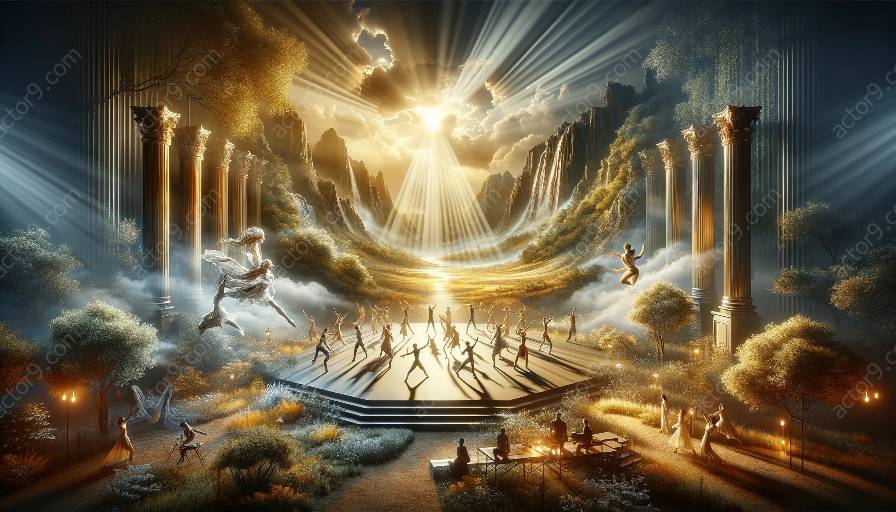Lighting design is an integral aspect of physical theatre performances, contributing profoundly to the storytelling, mood, and visual impact on stage. In physical theatre, where movement and expression convey narratives, lighting is a powerful tool that enhances and enlivens the performance.
Understanding Physical Theatre
To comprehend the significance of lighting design in physical theatre performances, it's essential to first understand the nature of physical theatre itself. Physical theatre is a form of performance that emphasizes the use of the body, movement, and gesture as the primary storytelling tools, often merging elements of dance, mime, and acting to convey narratives and emotions.
The Role of Lighting
One of the fundamental roles of lighting in physical theatre is to create an immersive and evocative atmosphere that complements the movements and expressions of the performers. Through carefully choreographed lighting design, visual dynamics are achieved, directing the audience's attention and enhancing the emotional impact of the performance.
Manipulating Emotions
Lighting design in physical theatre performances is adept at manipulating emotions through the interplay of light and shadow. By utilizing different intensities, colors, and angles of light, designers can evoke various moods and emotions, underscoring the narrative and adding depth to the storytelling.
For example, subtle, warm lighting may convey intimacy and tenderness, while harsh, stark lighting can evoke tension and conflict, effectively augmenting the physical movements and expressions of the performers to accentuate the storyline.
Visual Representation of Themes
Effective lighting design also contributes to visually representing thematic elements in physical theatre performances. The juxtaposition of light and dark, as well as the interplay of colors and shapes, can symbolize abstract concepts and motifs within the narrative, providing a non-verbal layer of storytelling that enriches the audience's experience.
Enhancing Dynamic Transitions
Another crucial role of lighting design in physical theatre is its ability to enhance dynamic transitions within the performance. Through the skillful manipulation of lighting cues and effects, designers can accentuate shifts in mood, time, and space, guiding the audience through the evolving journey of the narrative.
Sequences and Rhythms
Well-crafted lighting sequences can echo and complement the rhythmic patterns of the performers, creating a mesmerizing fusion of movement and light. This synchronization further accentuates the dynamic nature of physical theatre, amplifying the storytelling and immersing the audience in the performance.
Conveying Symbolism and Subtext
Lighting design also aids in conveying symbolism and subtext within physical theatre performances. The strategic use of light can illuminate specific elements or characters, drawing attention to symbolic motifs and underlying subtext, thus adding layers of interpretation to the narrative.
Conclusion
In conclusion, lighting design plays a vital role in physical theatre performances by contributing significantly to the storytelling, atmosphere, and visual impact on stage. Through the manipulation of light and shadow, color and intensity, designers enhance the emotional resonance of the performance, visually represent thematic elements, and seamlessly guide the audience through dynamic transitions, ultimately enriching the immersive experience of physical theatre.




































